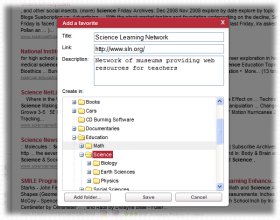|
Education
Web
Viewing 1-3 of 3 total results
USGS: Earthquake Hazards - The Earth's Crust
The contour interval is 10 km; we also include the 45 km contour for greater detail on the continents. Introduction Global Crustal Database Global Crustal Model Regional Crustal Models Download Maps Share this page: Facebook Twitter Google Email Earthquakes Real-time...
examine the role of water on the Earth. • Surface Examples: waves, glaciers, rivers • Underground Example: aquifers • Atmosphere Examples: precipitation, humidity (Comprehension) 6.E.1.3. Students are able to explain processes involved in the formation of the Earth’s structure....
1
0
examine the role of water on the Earth. • Surface Examples: waves, glaciers, rivers • Underground Example: aquifers • Atmosphere Examples: precipitation, humidity (Comprehension) 6.E.1.3. Students are able to explain processes involved in the formation of the Earth’s structure. Examples: plate tectonics, volcanoes, earthquakes #0;9 Interpret topographic and digital imagery or remotely sensed data to identify surface features. Examples: local, global, regional #0;9 Explain the formation of
99
0
http://doe.sd.gov/contentstandards/science/docs/2005/EarthSpace/South%20Dakota%20Science%202005.pdf#page=99
doe.sd.gov/contentstandards/science/docs/2005/EarthSpace/South%20Dakota%2...
examine the role of water on the Earth. • Surface Examples: waves, glaciers, rivers • Underground Example: aquifers • Atmosphere Examples: precipitation, humidity (Comprehension) 6.E.1.3. Students are able to explain processes involved in the formation of the Earth’s structure. Examples: plate tectonics, volcanoes, earthquakes #0;9 Interpret <span class="highlight">topographic</span> and <span class="highlight">digital</span> imagery or remotely sensed data to identify surface features. Examples: local, global, regional #0;9 Explain the formation of
topographic maps. d. Discuss applications of current geographic techniques in mapping such as GIS and GPS. 7.3.02 Know the location of places and geographic features, both physical and human, locally, regionally and globally. a. Identify the location of Earth's major physical character...
1
0
topographic maps. d. Discuss applications of current geographic techniques in mapping such as GIS and GPS. 7.3.02 Know the location of places and geographic features, both physical and human, locally, regionally and globally. a. Identify the location of Earth's major physical characteristics such as continents, landforms, bodies of water, climate regions, vegetation, and natural resources. b. Identify the location and size of major human features such as cities, political units, and countries. c. Explain why
6
0
http://www.state.tn.us/education/ci/ss/doc/SS_Grade_7.pdf#page=6
www.state.tn.us/education/ci/ss/doc/SS_Grade_7.pdf#page=6
<span class="highlight">topographic</span> <span class="highlight">maps</span>. d. Discuss applications of current geographic techniques in mapping such as GIS and GPS. 7.3.02 Know the location of places and geographic features, both physical and human, locally, regionally and globally. a. Identify the location of Earth's major physical characteristics such as continents, landforms, bodies of water, climate regions, vegetation, and natural resources. b. Identify the location and size of major human features such as cities, political units, and countries. c. Explain why
|
